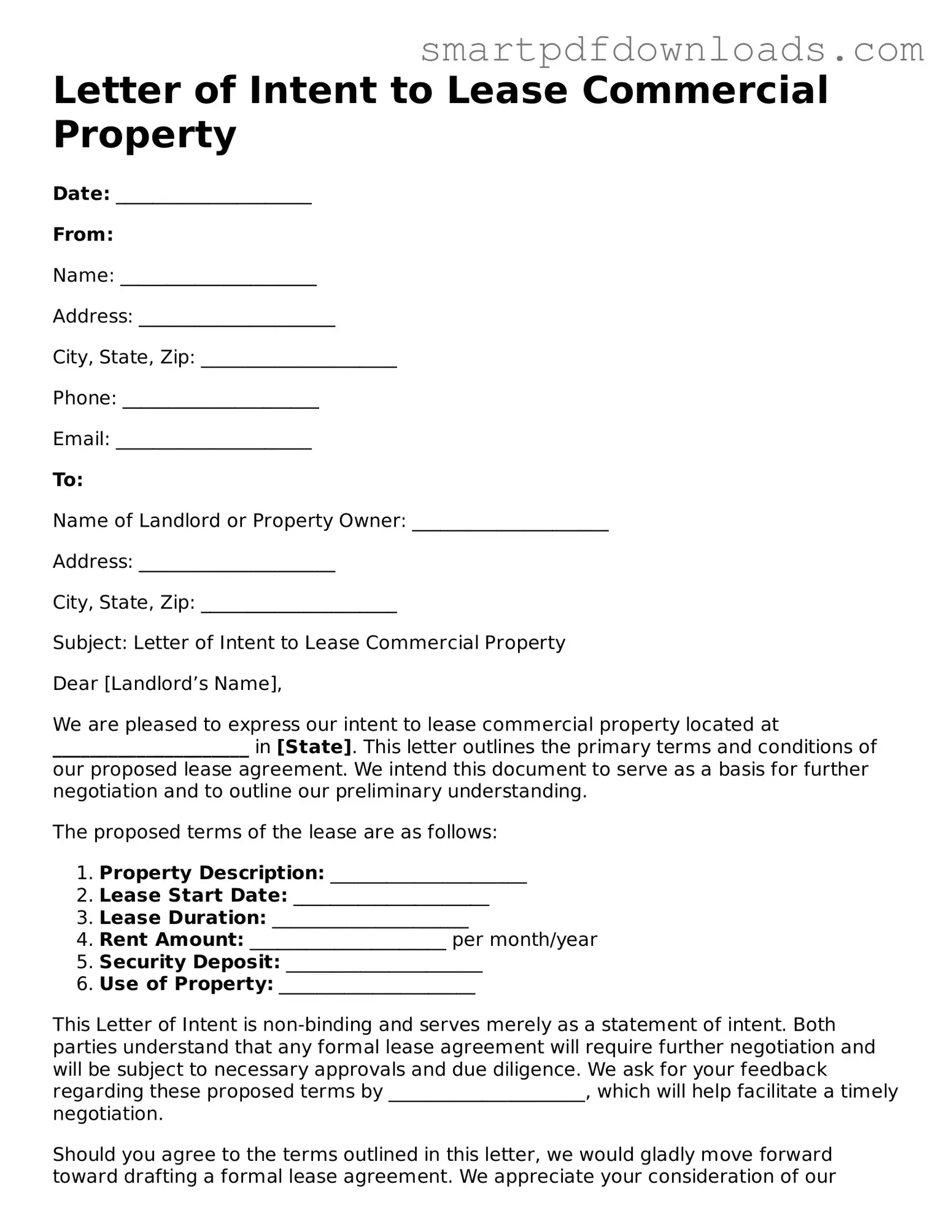Letter of Intent to Lease Commercial Property
Date: _____________________
From:
Name: _____________________
Address: _____________________
City, State, Zip: _____________________
Phone: _____________________
Email: _____________________
To:
Name of Landlord or Property Owner: _____________________
Address: _____________________
City, State, Zip: _____________________
Subject: Letter of Intent to Lease Commercial Property
Dear [Landlord’s Name],
We are pleased to express our intent to lease commercial property located at _____________________ in [State]. This letter outlines the primary terms and conditions of our proposed lease agreement. We intend this document to serve as a basis for further negotiation and to outline our preliminary understanding.
The proposed terms of the lease are as follows:
- Property Description: _____________________
- Lease Start Date: _____________________
- Lease Duration: _____________________
- Rent Amount: _____________________ per month/year
- Security Deposit: _____________________
- Use of Property: _____________________
This Letter of Intent is non-binding and serves merely as a statement of intent. Both parties understand that any formal lease agreement will require further negotiation and will be subject to necessary approvals and due diligence. We ask for your feedback regarding these proposed terms by _____________________, which will help facilitate a timely negotiation.
Should you agree to the terms outlined in this letter, we would gladly move forward toward drafting a formal lease agreement. We appreciate your consideration of our proposal and look forward to your response.
Best regards,
Signature: _____________________
Name: _____________________
Title: _____________________
Company Name: _____________________
Address: _____________________
City, State, Zip: _____________________
Phone: _____________________
Email: _____________________
